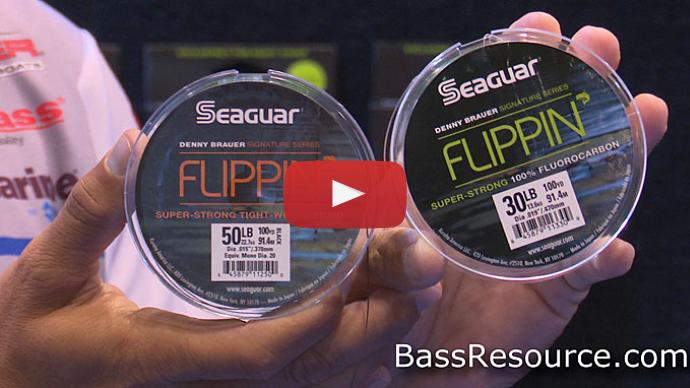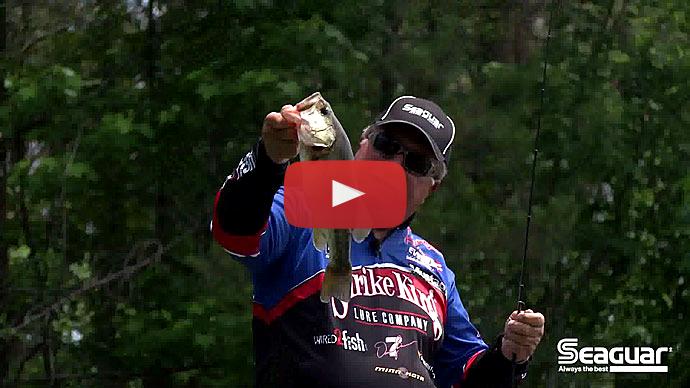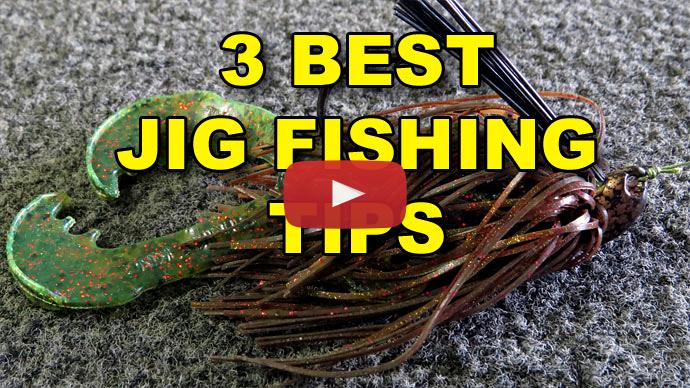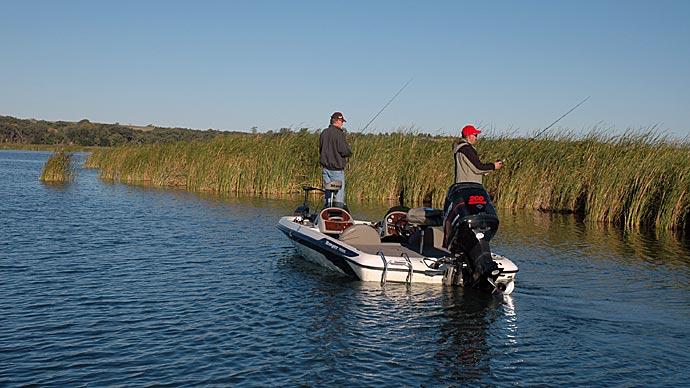When it comes to flipping and pitching, you're always hunting for some type of cover. It comes in a variety of forms and I can't tell you where to start on your lake. A lot of times you just have to start flipping or pitching, and fish, and fish and fish until you get that bite, and then you start to get a little closer to unraveling in what I call the pattern within the pattern.
But when it comes to boat docks, I just fish the whole dock. I'll fish each pier. I'll fish the walkway. If it's got anything unusual like a ladder, a rope, a boat, a lift, something like that, just fish it all.
But then when you get the bite, really pay attention. Now where exactly did that bite come from? Don't be in a hurry to go to the next boat dock, as an example. Sit and analyze the one where you just caught the fish. How deep a water are you sitting in? You know, is it like a gravel bank? Is it a mud bank? Is that dock on a point? Is it back in a pocket? Those fish will tell you a lot if you pay attention. You know, was it on the shallow side of the dock? Was it on the deep corner, the windy side, the calm side? If you're fishing a river was it up current side, the down current side? It really goes on, and on, and on and that's what I call that pattern within a pattern that can be so critical.
I know, like, when I'm fishing bushes, flooded buck brush, willow trees...It's so important if I could figure one thing out, is he on the shady side or is he on the sunny side? Because if I can figure out how he's positioned, I only have to make one flip or one pitch to that target, and as a tournament angler, obviously that gives me a larger window of opportunity. I can fish more bushes than my competitor, that hasn't figured it out. So I narrow it down to figuring out which side of the bush he's on, windy, calm, sunny, shady?
You figure that out and then take it one step further. When you pitch it in there and you get that bite, ask yourself, "Did he hit it on the drop or did he hit it after it was on the bottom and I was shaking it up and down?" Because if he hit it on the drop, that fish is aggressive, he's on that cover. You know how he's positioned on the cover. Now you know how he's biting. So if he hit it on the drop and your lure hits the bottom, why sit there and jig it up and down forever trying to get a bite? Get it out of there and get it to the next piece of cover. Once again, that makes you more efficient. You can cover more targets in a day.
There are times where you got to slow down, and sit there and jig it up and down to get them to bite, after cold fronts, heavily pressured places, things like that, but just analyze the cover, use common sense, but number one, listen to the fish. When you get that bite, really analyze everything you can about that piece of cover and exactly how that fish hit that lure and it will make you a more successful fisherman.




